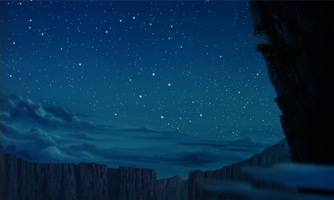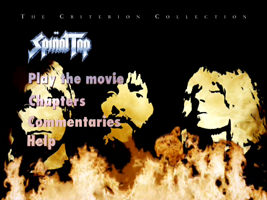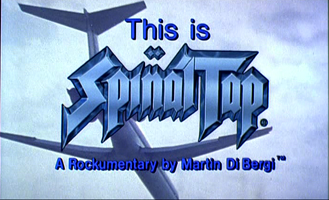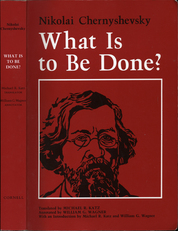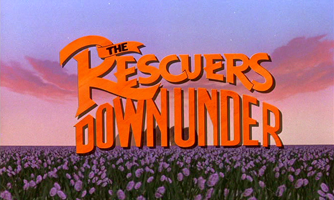
[Due to miscommunication, BETH was not present at the appointed hour for the screening; she watched the movie on her own a few days later and was coaxed into recording a few thoughts independently, without having heard ADAM and BROOM’s conversation. Her comments appear at the end.]
ADAM That was a lot more visually sophisticated than I was anticipating.
BROOM I remembered that about it, so I can’t say it was more than I anticipated. But yes, visual polish is definitely its greatest distinction.
ADAM And yet as a whole it’s distinctly inferior to both The Little Mermaid and Beauty and the Beast. Why? I don’t think it has respect for kids’ intelligence. To me, the dominant mode of this movie is a sort of wiseacre jokiness that really would have appealed to me as an eleven-year-old, but which is not wholesome.
BROOM How much jokiness was there, really?
ADAM All of the Wilbur stuff. A lot of the slapstick comedy. A lot of the Jake stuff.
BROOM Who’s Jake? Oh, the Australian mouse.
ADAM “Who’s Jake?” Exactly. When I was a kid I loved Tiny Toons, and Tiny Toons did that same kind of “wokka wokka! talking fast and using incongruous adult concepts!” — in a way that made me feel knowing, as a child, but was not wholesome or good.
BROOM I hear what you’re saying. But I also think that if I were reading this and hadn’t just seen the movie, I would be getting the wrong impression from you about how witty it was. It wasn’t witty at all. This movie wasn’t like Tiny Toons; it wasn’t full of wisecracks. It was full of things that are just as lazy, though.
ADAM When Wilbur crashes on the roof and he says, “passengers should remain seated until the flight has come to a complete stop!”… I would have cracked up at that, as a kid. Because it’s like a snippet of grown-up life inserted into this ridiculous context. That would have tickled me. But as an adult looking at it, I’m ashamed.
BROOM That’s a problem with a lot of humor, including a lot of stand-up comedy — that they just go for the laugh of recognition of what they’ve co-opted, what they’re sampling. That’s a cheap kind of humor. But I feel like there was a different cheapness at work here.
ADAM Well, there were many kinds of cheapness.
BROOM Yes.
ADAM When Bernard says, “Maybe next time we can take the train,” that’s the most inoffensive and lazy way to signal his timidity.
BROOM I didn’t even understand that line. Is the joke that you can’t take a train to Australia?
ADAM I think that’s the joke, yeah.
BROOM I think you were on the money with your first comment, that the movie doesn’t respect kids’ intelligence. Everything is just trope upon arbitrary trope. So much of childhood is the process of learning these things, and then when you return to them in adulthood you realize, “Oh, it never made sense. No wonder it was hard for me to assimilate as a child!” All these cartoon tropes, these things that always happened, I eventually picked up how they worked, what the standard playbook was. But now it’s no shock to me that so many of those things seemed so quizzical and took so long to become normalized — because they weren’t genuinely meaningful even to the adults making the cartoons.
ADAM The moment when Wilbur says “I’m never doing that!” and then, squawk!, now he’s doing it! — That’s a bit. It’s pleasing to a child not because it’s intrinsically funny but because it’s a bit that you recognize. It’s like seeing a hamburger on the menu at a strange hotel.
BROOM An example that was more central to this movie is this issue of “When is Bernard ever going to find a chance to propose to Bianca?” What is that? Why is that happening? What kind of a problem is that? The only justification for it is that it has happened in other movies. You can trace it back to basic dramatic principles — you know, tension and conflict; challenges creating empathy for characters — but that’s not actually the function that it serves in this movie. Toward the end they sort of retroactively suggest that Bernard needed to prove his bravery or else this more attractive, stronger guy really did deserve to end up with Bianca instead of him. And then of course he proves his bravery and so is now “allowed” to marry her. But the fact that he’d been comically interrupted several times before while trying to propose is really neither here nor there. As a kid watching that, you just pick up on the lazy rhythms that govern such things and you get that it’s all one big meaningless formula.
ADAM There’s also the Three’s Company routine when they’re at dinner — he says “But this is so sudden, don’t you need a gown?” and she says “No, I just need khaki shorts and hiking boots!” and he’s like “What??” I loved Three’s Company, as a kid… but that’s just not a sophisticated or, ultimately, a good-for-you kind of humor.
BROOM Isn’t that in Shakespeare too? Isn’t that just the crossed signals joke? I’m sure that goes back way before Three’s Company.
ADAM But that’s where I knew it from. Chrissie overhears Jack and Janet talking about going to dinner, but she thinks they’re talking about having sex!
BROOM “Hiking boots??” It’s actually surprisingly risque for this movie, if you take it as that. Details like that can end up a little bit out of bounds because they only crop up out of laziness in the first place. Like that second-rate Chaplin routine where the eggs get stolen out from under McLeach’s nose, which felt like it was from another movie. They put it in that one long continuous shot. That was one scene where I felt like the boldness of the visuals crossed over into the actual staging.
ADAM I liked that scene.
BROOM The movie wasn’t generally that interesting about staging, but it did have a lot of visual choices that were obviously considered. It looked cared-for.
ADAM It had a glossiness to it that looked expensive.
BROOM Yes, there was a sheen over the whole thing.
ADAM There was a pastel ugliness to a lot of it. Everything was reflective in a way that was unappealing.
BROOM It had more shadows indicating three-dimensional rounding than any movie we’ve seen yet. And possibly than any to come. But they’re definitely going to keep cranking that stuff — Pocahontas is going to look very bulbous. To me, it gives things a slightly unsavory quality. Everything is supposed to have a tactile appeal, and I feel like, “why? Why should I want to touch that kid’s boots?” or whatever we happen to be looking at that’s so lovingly rounded.
ADAM That’s what what people say it’s like to take Ecstasy. Everything has a roundness to it that’s really…
BROOM A little horny?
ADAM Yeah.
BROOM In that Huxley essay where he was on acid, he said that the legs of the table had a transcendent tubularity.
ADAM I think the lowest point in the whole movie for me was when they’re trying to take off in the snowstorm and Wilbur says “Cowabunga!” while drums are going.
BROOM That music cue was really bad.
ADAM I think that even as a kid I could see through moments like that to grown-ups trying to be kidlike for the sake of pulling one over on you. It felt like a Doritos commercial.
BROOM I know you’re particularly sensitive to that. You got pissed off at the vultures in Jungle Book for the same reason. But I feel like if you’re going to go looking for that, you can find it in every inch of this thing. Isn’t it all sort of pandering?
ADAM Yes! That’s why I’m recoiling.
BROOM Okay, but that’s not what bothers me. I would say the part of this movie that was my least favorite was when they fired a syringe into someone’s butt with a rifle. That’s a very unpleasant thing to think about, and I still don’t know why it was in this movie.
ADAM Yeah, but at least the sadistic nurse-mice had a certain novelty. Say what you will about them, but the idea of tittering mice in wimples engaging in medical torture is more genuinely funny than most of the humor here.
BROOM But why was that in this movie at all? Three scenes later, you said, “Oh look, it’s The Rescuers!” because we hadn’t seen the heroes or the main quest in such a long time. We’d been watching a seagull get tortured.
ADAM The “main quest” didn’t consist of anything but modes of transportation.
BROOM The sadism is a thing that’s been running through the 80s, but that will get turned around, right? In The Lion King and Beauty and the Beast and the rest of them, the violence isn’t as offhand as this. That stops here.
ADAM I think so. But that’s because it gets replaced with a kind of faux-nobility. It will be interesting to see if there’s any of it in Aladdin.
BROOM Aladdin is slapstick, but I don’t think its moral compass is so out to lunch.
ADAM John Candy seemed to be directly reprising his role from Planes, Trains, and Automobiles.
BROOM I couldn’t identify him as John Candy! I’m pretty sure it was Dom DeLuise in the first one [ed. wrong, you’re thinking of this] and it really sounded to me like someone else was doing Dom DeLuise. I guess they’re similar voice types to begin with.
ADAM Introducing him with “Orville’s not here, now it’s Wilbur!” was like Dennis the Menace.
BROOM Like kids in 1990 are really going to remember the exact voice of Orville from 1977. Actually, I guess by then it was the age of video, so consistency mattered more. But still, the idea that kids would remember The Rescuers at all…? Why did this movie happen at all? If they wanted to make a sequel why didn’t they make a sequel to, say, Dumbo? Why on earth would they make The Rescuers Part Deux? And then “down under” of all things? It’s like the special episode of a sitcom where they spin the globe and go to some arbitrary place, just to mix things up.
ADAM It was like the Simpsons episode where they go to Australia.
BROOM Yes. The movie’s very existence is a symptom of the same kind of laziness that was in each scene. And “laziness” isn’t a good enough word for the problem. There’s no there there. It’s like to create the substance of the movie they just used some machine that churns things out. Whereas to create the individual shots, they actually used something much more interesting than what they had used for Little Mermaid.
ADAM But again: although it was superficially attractive, it all looked sort of tinselly, in a way that I found distinctly unappealing. Everything seemed like it was coated in cellophane.
BROOM I’m not endorsing the look, but it did create a point of interest in the movie. “Look at this zooooomy shot we put in here, and now look at this extreme focus-pull effect we put in here…” If you think about Little Mermaid, it doesn’t have very much of that sort of thing; it’s mostly simple, old-fashioned camerawork, which works just fine. I didn’t like it this way. This was your classic polished turd. It was highly buffed nothingness.
ADAM They discarded characters freely and randomly. What happened to the kangaroo friend from the beginning?
BROOM What happened to Frank?
ADAM We never see the international Rescuer assembly again; we never see the mother again…
BROOM Not seeing his mother at the end is a real offense, and I called in advance that they were going to commit it. It’s an offense that we should have to see the “Ma’am, your son is dead” scene and then never get to see any kind of reunion. And when the kid is released from captivity, he doesn’t go home to his mother first before he goes to save the eagle eggs? The movie didn’t take place in a world of people with emotions. Yes, I know: “duh.” But why shouldn’t it? Why should any kid have to watch a movie without a soul? I hated the way Cody looked, by the way. I hated his face.
ADAM He looked like a Toy Story object.
BROOM He looked a little like Lilo will look, but not as clean.
ADAM He looked intentionally de-eroticized.
BROOM I also thought McLeach had been clearly “de-eroticized.” What does you mean by that — you mean if they had just made him a “good looking boy” it would have been creepy to you? Has that been a problem with kid characters in the past?
ADAM No, I don’t know — maybe it wasn’t on purpose. It was just striking to me that he looked like Piglet.
BROOM He didn’t look quite human. He looked like a stuffed boy doll. And McLeach was so awkwardly ugly. His face was okay but his body looked like a milk carton. He was up there with Fagin in ugliness.
ADAM And why did he have a Texas accent?
BROOM For all that it was the point of the movie, the Australianness of it was actually pretty thin. Though they do happen to live right at the base of Ayers Rock.
ADAM It was convenient that their flight arrived right at the Sydney Opera House.
BROOM Those were the two things about Australia that they managed to get in there. And I guess they included Australian animals.
ADAM The non-speaking animals had beady black eyes whereas talking animals had whites to their eyes. It was a weird sort of racial hierarchy.
BROOM Did the mice talk openly to the girl in The Rescuers? When this kid runs into the woods and then a kangaroo says “get on my back!” to him, it was weird.
ADAM It was. No-one was talking, and then the kangaroo spoke, and it was the only voice with an Australian accent, and then none of the other animals spoke after that for like twenty-five minutes.
BROOM All this said: watching it was not as chorelike as a watching movie this worthless ought to have been, because it kept having things to look at.
ADAM That’s true. Every five minutes it paused for some swooping.
BROOM I’m not sure “give it its due” is the right phrase, because I don’t think it’s “due” anything, but… if this had been DuckTales: Treasure of the Lost Lamp, for example. we would be much angrier now because it would have given us nothing. I think this regularly gave us something. The backgrounds were pretty bad. The framing I think was pretty good!
ADAM But the visual interest was very nerdlike. I know if I had made an animated movie as a kid, I would have been extremely proud to have made an accurate representation of the New York City skyline, or of the map from Hawaii to New York. And indeed there’s a credit here: “New York City skyline data provided by Skidmore, Owings, and Merrill.”
BROOM That was in Oliver & Company, too.
ADAM It’s clear they took a lot of pleasure in an accurate, toylike approach. I’m sure all the animals were anatomically accurate. It all had a “collector’s” quality to it, which is not wholesome.
BROOM You’re making a good observation here, and I think it reflects an overarching issue: I think what you’re seeing is a generational turnover in what it means to be animator. The “nine old men,” the guys we saw make Dumbo and Peter Pan and Alice in Wonderland and all those movies — I think Fox and the Hound was the last one where any of those guys were leads, and they felt old, by that point — those were guys who had come out of a time where there was no “world” of animation. They were guys who knew drawing, and animation was this fresh opportunity to make drawing into acting, and they got to figure out how. That’s the task that got them going. Whereas now, these are second or third generation people who explicitly want to be making cartoons that remind them of cartoons. They’re there because of the older Disney movies. These people probably didn’t have aspirations to be painters — they’ve always wanted to be animators. It happens in any kind of art: the second generation feeds off what the first generation did, not necessarily the spirit in which they did it. And I think that inevitable process of misunderstanding is going to continue — by the time we get to The Princess and the Frog, that’s going to be yet another generation. Those people grew up on this movie!
ADAM That’s going to be weird when we get to those people, who want to restore the lost art of The Little Mermaid.
BROOM I think the wholesomeness of intention of the first generation will never be gotten back, because you have this huge powerful studio investing huge amounts of money, so of course the people who rise to the lead positions are going to be the ones who are most specifically driven to be at the top of the animation game. You’re not going to get generalists, non-nerds. They’re never going to be, like, smart fashion illustrators that Walt spotted somewhere. I don’t know what those guys’ stories were, but none of them were cartoon nuts.
ADAM Yeah. Maybe I’m imagining it, but this movie felt like it had a whiff of like, the Mary Worth phone.
BROOM Yes! I think one of the most rewarding things about older movies is that they don’t feel incestuous. Whereas almost everything these days has the thumbprints of obsessives on it. In 1994 it was still a novelty that Quentin Tarantino, a film-nerd video store guy, who totally is the Comic Book Store Guy from the Simpsons — for those of you who didn’t know what Adam was referring to — had made a movie. That he was a geek connoisseur and an actual creator. Now it seems like nobody just sort of stumbles into the business anymore. I in my real life in the theater know that there’s just oodles of theater written by those connoisseur people who love theater, and it’s terrible. The things that are the most interesting are by the people who have the fewest aspirations toward that. If you feed yourself only Disney movies, you’ll make a fetishized Disney movie.
ADAM A weird albino Disney movie.
BROOM Which is what you’ve been saying — this movie felt fetish-y.
ADAM The surfaces did.
BROOM The degree that the animators want to lick their own work has increased.
ADAM I was going to say it had sort of a RealDoll feel.
BROOM And I don’t know how that can possibly be turned back. What can a studio do to keep out the people who want to be there a little too much? If they’ve got talent, those people are going to rise.
ADAM You can go down the road to Shrek or The Emperor’s New Groove — those sorts of things seem like they’re inspired by commercials.
BROOM The diameter of the circle that must be traversed before one’s tail can be eaten gets shorter and shorter. I’m led to understand that a big part of the reason Little Mermaid felt fresh is because Ashman and Menken showed up, and guess what? They were not cartoon nerds! They were theater nerds, and theater nerdism was relatively fresh blood for this world. Whereas this movie felt like it was made by people who not only had worked on He-Man but also watched He-Man. I’m not sure what other kinds of blood can be poured into the mix to turn it back.
ADAM It would be interesting to see a Disney movie made by, like, Chris Ware; comic book people. What if a Disney cartoon was made by Marvel comics type people? Or what if you had a legitimate director, like… Alfonso Cuaron?
BROOM I’ll bet that’s been considered and I’ll bet it’s been dismissed because the task of an animation director is so completely distinct from the task of a live action director. Though there was The Nightmare Before Christmas, where Tim Burton didn’t technically direct it because they needed a real animation director, but Tim Burton sort of told them what movie to make. And people love that movie! It’s a weird movie and it has some problems, but it definitely felt fresh.
ADAM There’s also, like, Spirited Away.
BROOM That’s right. I think Miyazaki is as much of a second-generation geek as these people, but it’s filtered through a different cultural sensibility. I think it his work comes out of growing up watching Peter Pan too, but since he’s Japanese it’s all different to him. I guess the real issue is whether you have the craft so under your belt that you can waste it, or whether you have to earn what you’re doing and keep thinking about the underpinnings. I think the people who are a little fresher to the problems involved are forced to think more clearly.
ADAM Well, the upshot is that this felt like a room that had been sat in for a little too long. For whatever reason. I would have liked to say something about gender, but there was no gender of any kind in this movie.
[We read the New York Times review]
ADAM That was not very thought out.
BROOM That wasn’t on the money. And I think the fact that she “remembered” the maitre d’s name from the beginning must mean that she got most of this from looking at the press packet afterward. It didn’t feel like a very engaged review. Vincent Canby puts more on the line. And god bless Bosley Crowther; he wasn’t always right, but he was always for real.
ADAM That review was just a list of things. And what is this about the movie being too dark? I don’t agree with that.
BROOM We said it had a sadistic strain to it.
ADAM But she said the hospital scene was a more lighthearted moment.
BROOM The sadism ran throughout. For the comedy scene to be “we’re gonna get you with a chainsaw!” and for the serious scene to be “I’m gonna lower you into a crocodile’s jaws!” comes from the same careless impulse.
ADAM Itchy and Scratchy’s revenge.
BROOM It’s only appropriate if you have no investment in the characters and it’s just a series of images. Which is what it was, and which is exactly what was wrong with it.
BETH The Australian mouse was more appealing than the Bob Newhart mouse. The Bob Newhart mouse is a pathetic mumblebum. There’s nothing appealing about that mouse! And then this dashing safari mouse appears — kids would want that mouse to be her husband. Even at the end, he’s nice about the marriage proposal and gives a thumbs-up.
The hospital scene was my least favorite part of the movie. The scenes with Wilbur felt unnecessary and extraneous, like a distraction, even though at the end he does play a role. It’s like they needed to develop his character earlier on so that we cared later when he was helping them. But that scene made everyone look bad. It made the hot mouse look bad for saying that he needed to go to this hospital, which was like a crackpot hospital.
I did like the opening when they were at that restaurant hidden at the top of another restaurant. It was cool that it was in the chandelier and they had this beautiful view of the city, and it was snowing. That was a nice scene, to me. I didn’t like everything that happened there. I liked where I thought it could have gone, but then it got silly.
The whole bird adventure at the beginning was dumb. It really was ridiculous. We were working with nothing, and that’s what was given to us. You have absolutely no sense of where things are going to go from there. Then they go in a pretty pedestrian direction.
I liked the CGI at the beginning with the 3D scenery and the big zoom. It reminded me of 3-D WorldRunner. But I had questions right away about why it was in Australia. The kid in the movie didn’t have an Australian accent. His mom kinda did. Did they really use Australia very well as a setting? No! They didn’t do anything with it.
The sidekick, the minion, the lizard thing, was, you know… standard.
The breaking out of jail scene was really long. It bothered me that the little creature could easily have just gotten out, and that no one suggested that to him.
I thought it was funny that there was a “wanted” posted nailed to a tree. In the middle of the forest? This took place in modern times!
[Bonus link: Siskel & Ebert review]
